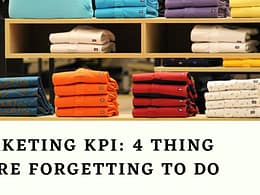Content types influencing purchase decisions
The digital landscape has evolved dramatically since 2018, and so have consumer behaviors. While the core principles of content marketing remain relevant, the specific content types and delivery methods that resonate with audiences have shifted. Let’s explore how contemporary consumers engage with content and make purchasing decisions.
As indicated by Forrester’s “US eCommerce Forecast: 2013 To 2018” report, purchasers will be burning through $414 billion online by 2018, a 57.4 percent expansion from 2013.
The Modern Consumer Journey
Today’s consumers are more informed, discerning, and demanding than ever before. They expect brands to provide value at every touchpoint, and they’re more likely to make purchases based on trust, authenticity, and personalized experiences.
Here’s a breakdown of how content fits into the modern consumer journey:
- Awareness Stage:
- Social media content (short-form videos, reels, TikTok)
- Influencer marketing
- Interactive quizzes or polls
- SEO-optimized blog posts
- Consideration Stage:
- In-depth blog articles and guides
- Product demos and tutorials
- Customer reviews and testimonials
- User-generated content (UGC) showcases
- Email marketing with personalized recommendations
- Decision Stage:
- Limited-time offers and discounts
- Customer success stories
- Live chat or virtual shopping assistance
- Product comparison tools
- High-quality product imagery and videos
Content Types That Drive Conversions
While the specific formats may vary, these content types continue to be effective in influencing purchase decisions:
- Visual Content:
- High-quality product images and videos
- Infographics and data visualizations
- User-generated visual content (photos, videos, unboxing)
- Short-form video content (TikTok, Instagram Reels)
- Informational Content:
- How-to guides, tutorials, and DIY content
- Expert advice and industry insights
- Product reviews and comparisons
- FAQ pages and customer support resources
- Interactive Content:
- Quizzes, polls, and personality tests
- Calculators and tools
- Augmented reality (AR) and virtual reality (VR) experiences
- Interactive product demos
- User-Generated Content (UGC):
- Customer reviews and testimonials
- Social media mentions and shares
- User-submitted photos and videos
Best Practices for Content Creation
- Know Your Audience: Understand their needs, preferences, and pain points.
- Create High-Quality Content: Invest in visually appealing, informative, and engaging content.
- Optimize for Search: Use relevant keywords and SEO best practices.
- Distribute Widely: Share your content across multiple channels.
- Track and Analyze: Measure content performance to refine your strategy.
- Prioritize Mobile: Ensure your content is optimized for mobile devices.
- Embrace Personalization: Tailor content to individual preferences.
The Future of Ai content types influencing purchase decisions
The future of content marketing is bright, and AI and GPTs are set to play a major role in shaping its trajectory. AI and GPTs are already being used to automate many aspects of content creation, and their capabilities are only going to become more sophisticated over time.
AI and GPTs can be used to:
- Generate high-quality content: AI and GPTs can be used to generate high-quality content that is engaging and informative. This can help businesses to save time and money on content creation.
- Personalize content: AI and GPTs can be used to personalize content for individual users. This can help to improve engagement and conversions.
- Optimize content for search engines: AI and GPTs can be used to optimize content for search engines. This can help businesses to improve their visibility and reach a wider audience.
- Analyze content performance: AI and GPTs can be used to analyze content performance and identify areas for improvement. This can help businesses to make data-driven decisions about their content marketing strategy.
AI and GPTs are still in their early stages of development, but they have the potential to revolutionize the way that businesses create and distribute content.
Here are some specific examples of how AI and GPTs are already being used in content marketing:
- AI-powered writing assistants: AI-powered writing assistants can help writers to brainstorm ideas, organize their thoughts, and write more effectively.
- AI-powered image generators: AI-powered image generators can create high-quality images that can be used in blog posts, social media posts, and other marketing materials.
- AI-powered video editors: AI-powered video editors can help businesses to create engaging videos that can be used to promote their products and services.
- AI-powered chatbots: AI-powered chatbots can provide customer support and answer questions about products and services.
The future of content marketing is bright, and AI and GPTs are set to play a major role in shaping its trajectory. If you are not sure which Ai tool to learn, refer this informative article on what skillsets to learn? Also, read about Hybrid Marketing – The Benefits of Combining Print & Digital Media









![Seven Online Marketing & Advertising Updates to look at in [current_date format=Y] 245](https://ml2mqtnphclp.i.optimole.com/cb:dxj7.5230e/w:260/h:195/q:mauto/rt:fill/g:sm/f:best/https://martechguide.com/wp-content/uploads/2020/07/Green-and-Blue-Illustrative-Technology-Investor-Update-Presentation.png)

